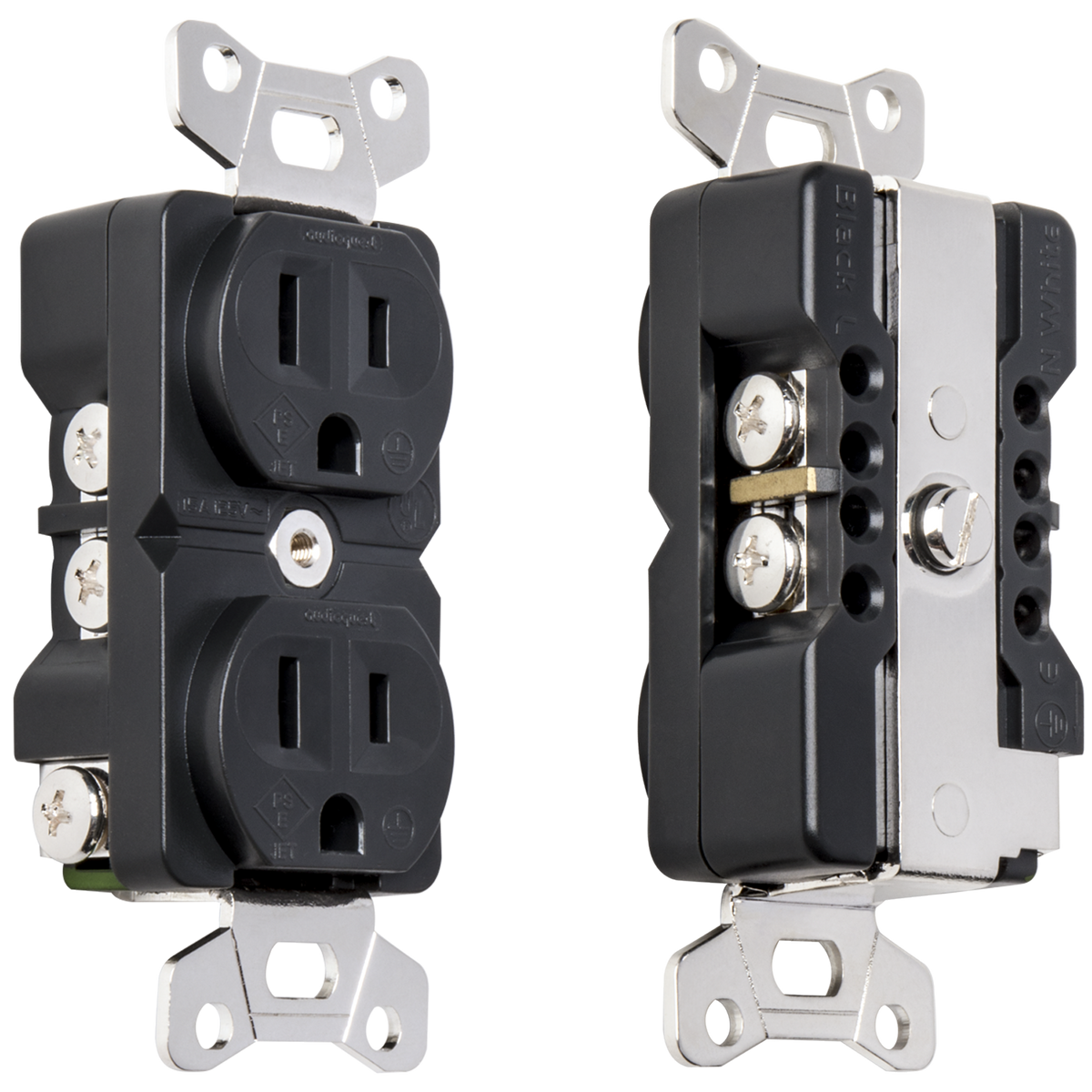
On Bi-Wiring and Power Conditioning
AudioQuest's Niagara 3000 proves to be a first of its kind — the first power conditioner Alex Halberstadt doesn't hate, that is.
Dupla fali aljzat
Gyakran a személyes preferencia dönt arról, hogy a hangszórókábeleket villás csatlakozókkal vagy banándugókkal fejezzük be. Azonban az EU-kompatibilis elszigetelt kötőpontok, amelyeket néhány erősítőn használnak, gyakran megnehezítik, ha nem lehetetlenítik el a villás csatlakozók magas nyomatékkal vagy nyomással való meghúzását. Ezekben az alkalmazásokban az AudioQuest banán csatlakozó a jobb választás, és lehet, hogy az egyetlen választás.
Az AudioQuest meglehetősen kiterjedt felmérést végzett a kortárs erősítőgyártók körében annak meghatározására, hogy a villás vagy a banán csatlakozók lesznek-e a legmegfelelőbbek egy adott márkájú és típusú erősítőhöz. Kérjük, lépjen kapcsolatba velünk, adja meg az erősítő márkáját és típusát, és mi válaszolunk az optimális csatlakozó típussal.
Itt általában az U-villás vagy a banán csatlakozót ajánljuk. Azonban, még ha kevesebb is a súly és a nyomás a kábel ezen oldalán (különösen a BiWire szetteknél), fontos megjegyezni a kötőpont kialakítását. Ha a banán csatlakozó nem tud teljesen beilleszkedni a kötőpontba, egyik villás csatlakozónkat ajánljuk.
Ez az AC aljzat egyfázisú AC elágazó áramkörökhöz készült, amelyek 220-240 voltos AC feszültségtartományban működnek, 50 vagy 60 Hertz szinuszhullám frekvenciával. Ha az elágazó áramkör 15 amperes megszakítót használ, akkor az NRG Edison 15 alkalmazása megfelelő. 20 amperes szolgáltatáshoz használjon NRG Edison 20-at. A szolgáltatási megszakítónak 20 amperesnek kell lennie, legalább #12 AWG vezetékezéssel vagy nehezebb (alacsonyabb számú) vezeték keresztmetszettel.
Ajánlások dedikált vezetékezéshez:
Az AudioQuest NRG Edison 15 & 20 AC duplex aljzat akár #8 AWG vezetékezést is képes fogadni, bár a #10 vagy #12 jobb tulajdonságokkal rendelkezhet a #8 AWG vezetékkel szemben a Zaj-Eloszlatás szempontjából, vagyis az RF zaj visszavezetése az elektromos panelhez és a földelő cövekhez. Ez annak köszönhető, hogy a rádiófrekvenciás bőrfelhúzás vékonyabb vezeték keresztmetszeteket részesít előnyben, így a zajcsökkentés hatékonyabb vékonyabb vezeték keresztmetszettel. Ez fontos szempont a rendszer optimalizálásakor dedikált vonallal, vagyis egy különálló Vonal, Semleges és Földelő vezeték, amely visszavezet az elsődleges elektromos panelhez anélkül, hogy más AC aljzatok láncolva vagy sorosan lennének csatlakoztatva ezekhez a vezetékekhez.
Minél alacsonyabb a vezeték ellenállása (nehezebb vezeték-kábel alkalmazásával), annál alacsonyabb az AC impedancia, amely jelen van 50-60 Hz-en. Ez előnyös bármely teljesítményerősítő számára. Ugyanakkor igaz, hogy az optimális Zaj-Eloszlatás biztosítása (a rádiófrekvenciás zaj eltávolítása a rendszer érzékeny komponenseitől) hatékonyabb enyhén kisebb vezeték átmérőkkel. Amikor csak lehetséges, a szilárd magos elektromos minőségű AC vezetékezés jobb eredményeket hoz. Azt tapasztaljuk, hogy amikor dedikált AC vonalat telepítenek, a #10-#12 AWG vezetékezés a legjobb kompromisszum, függetlenül attól, hogy az elágazó áramkör 15 vagy 20 amperes működésre készült.
Előfordulhat, hogy egy dedikált vonal nem lehetséges (és nem is feltétlenül szükséges), különösen, ha a telepítés bérbe adott, bérelt vagy ideiglenes helyen történik. Még egy 10 vagy 15 amperes szolgáltatás alapértelmezett vezetékezésével is, a rendszer jelentősen profitál az NRG Edison AC duplex aljzat telepítéséből.
(Kattintson a forró pontokra a részletekért)
